How To Get Motor Oil Out Of Clothes Like A Pro
In our daily lives, where work and home life blend seamlessly, encountering motor oil stains on clothes can be an unexpected challenge. These stains don’t signify the end for our clothing but offer a moment for action and renewal. By adopting the right techniques, we can breathe new life into our wardrobe. We can easily transform stained garments into vibrant attire once again. Cleaning oil stains emphasizes not the finality of stains but the opportunity for rejuvenation. It’s a testament to our ability to tackle life’s little mishaps head-on, armed with knowledge and the right approach to reclaim the beauty […]

In our daily lives, where work and home life blend seamlessly, encountering motor oil stains on clothes can be an unexpected challenge. These stains don’t signify the end for our clothing but offer a moment for action and renewal. By adopting the right techniques, we can breathe new life into our wardrobe. We can easily transform stained garments into vibrant attire once again. Cleaning oil stains emphasizes not the finality of stains but the opportunity for rejuvenation. It’s a testament to our ability to tackle life’s little mishaps head-on, armed with knowledge and the right approach to reclaim the beauty of our clothes. That’s why today we will show you how to get motor oil out of clothes with a few simple methods.
Let’s learn how to get motor oil out of clothes

How To Get Motor Oil Out Of Clothes
Motor oil has a tenacious nature. It adheres strongly to fabric, penetrating deep into the fibers. This not only affects the garment’s appearance but also its texture and durability. The complexity of motor oil requires a thoughtful and strategic approach to removal, considering the specific type of fabric and its color sensitivity. Before engaging in stain removal, assessing the material’s properties is crucial, setting the stage for a tailored and effective cleaning method. This preparatory step is vital, as it ensures that the chosen approach respects the fabric’s integrity while effectively combating the stain.
Wondering how to get motor oil out of clothes?

Dish soap
Dish soap is designed to combat grease. It possesses surfactants that break down the oil’s surface tension, allowing it to be lifted and separated from the fabric. This action makes dish soap a powerful ally against grease stains on clothing, mimicking its effectiveness on kitchenware by targeting and dissolving the grease molecules for easy removal.
What you’ll need:
- Dish soap (preferably a grease-fighting formula)
- Old towel or cardboard
- Soft-bristled brush or cloth
Steps:
- Place the garment flat, with an old towel or piece of cardboard under the stained area to prevent the stain from spreading.
- Apply a small amount of dish soap directly onto the stain.
- Gently scrub the area with a brush or cloth to work the soap into the stain.
- Let it sit for 5-10 minutes.
- Rinse the area with warm water, then launder as usual.
Dish soap is designed to break down the oil’s surface
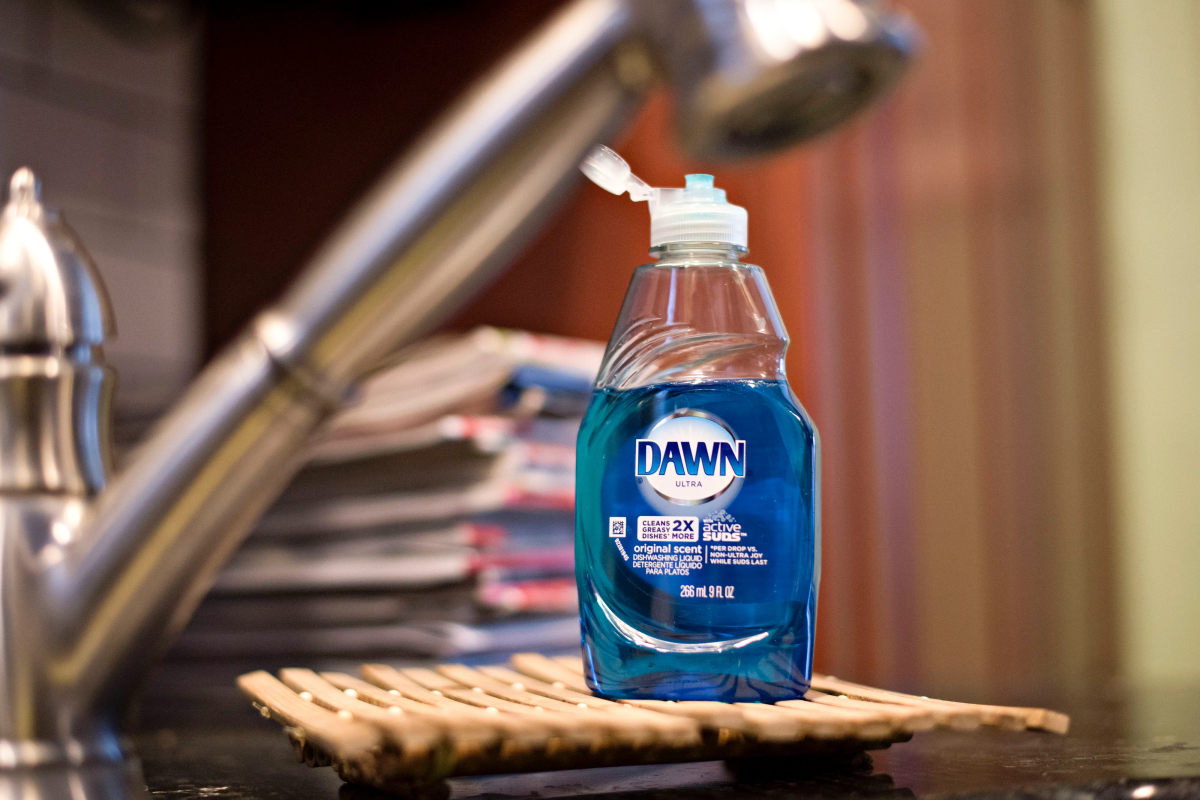
Baking soda
Baking soda is not just a kitchen staple but a versatile cleaning agent, thanks to its mild alkalinity. It acts as a natural absorbent, pulling oils and grease out from the fabric by creating a reaction that loosens the grease’s hold on the fibers. This process makes it easier to lift the stain from the material, especially when applied to fresh spills that haven’t had time to set.
What you’ll need:
- Baking soda
- Old towel or cardboard
- Soft brush or vacuum
Steps:
- Lay the clothing flat with a towel or cardboard underneath.
- Sprinkle a generous amount of baking soda over the grease stain.
- Wait 30 minutes to an hour for the baking soda to absorb the oil.
- Gently brush off the baking soda or use a vacuum to remove the powder.
- Launder the garment as you normally would.
Baking soda acts as a natural absorbent
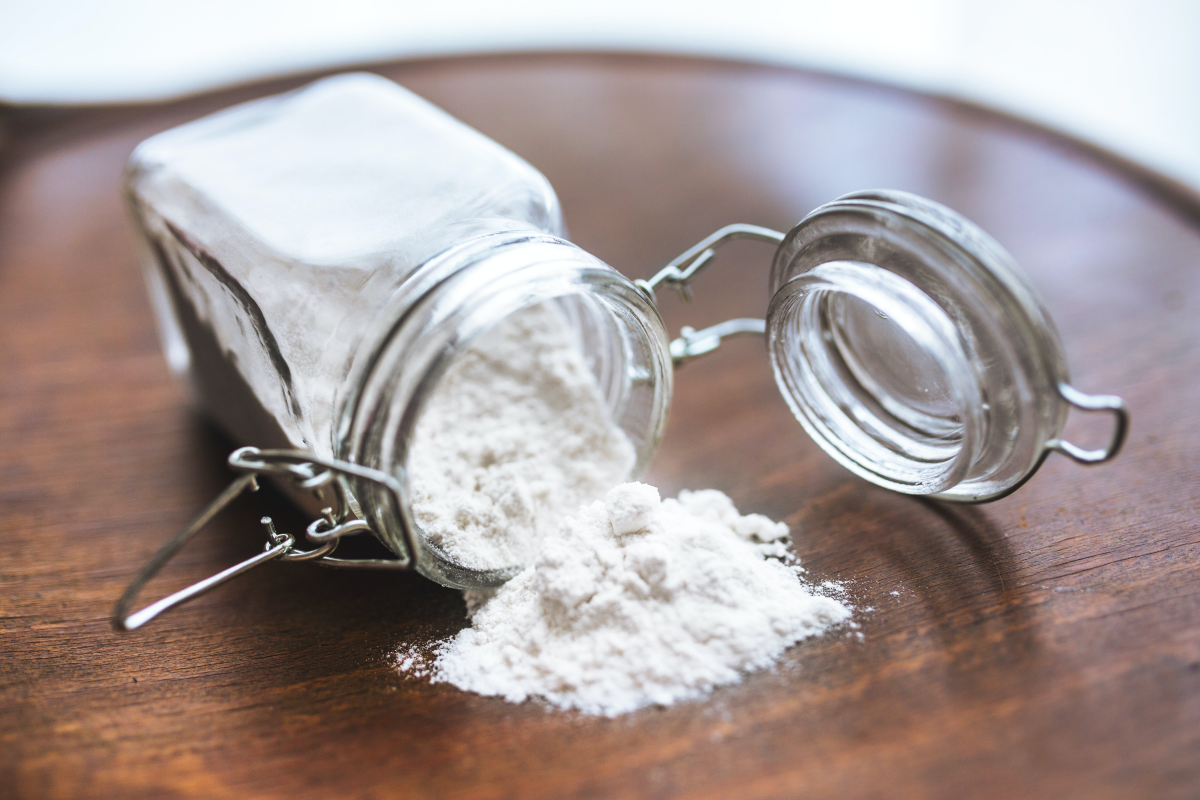
Aloe vera
Aloe vera gel is renowned for its soothing properties on skin, but its benefits extend to fabric care as well. The gel’s composition includes compounds that can break down oils and grease, making it an effective, gentle treatment for removing stains. Its natural enzymes help to dissolve the oils without harming the fabric, offering a safe alternative to harsher chemical cleaners.
What you’ll need:
- Aloe vera gel
- Warm water
Steps:
- Pre-treat the stain by soaking the garment in warm water.
- Apply a generous amount of aloe vera gel directly to the stain.
- Rub the gel into the stain gently with your fingers.
- Let it sit for a few minutes before rinsing thoroughly with warm water.
- Wash the garment as usual.
Aloe vera gel can break down oils and grease
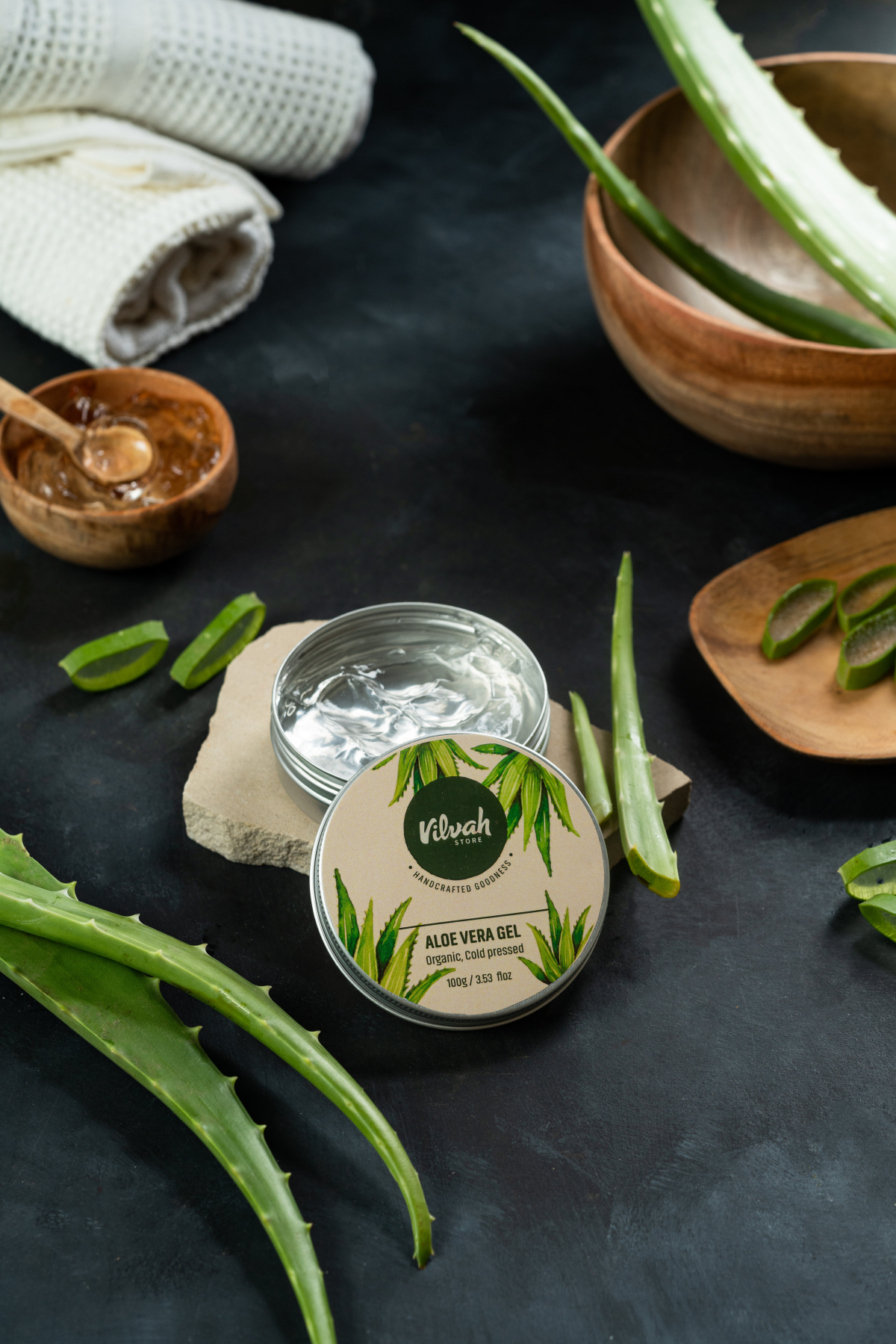
Cornstarch
Similar to baking soda, cornstarch is a highly effective absorbent, making it ideal for tackling oily and greasy stains. Its fine particles adhere to the oil, drawing it out from the fibers of the fabric. Cornstarch works by absorbing the oil, which then can be brushed away, removing the stain without the need for aggressive scrubbing that might damage delicate fabrics.
What you’ll need:
- Cornstarch
- A soft brush or cloth
Steps:
- Sprinkle cornstarch over the stained area on the garment.
- Let it sit for 20 minutes to an hour, allowing the cornstarch to absorb the oil.
- Brush away the cornstarch with a soft brush or cloth.
- Wash the garment in cold water and air dry.
Cornstarch is also super absorbent

WD-40
WD-40, typically known for its lubricating properties, can also serve as an effective pre-treatment for grease stains. Its unique formulation can break down the grease, making the stain more susceptible to removal with subsequent washing. It acts by softening the grease, allowing for easier removal, especially in combination with other cleaning agents like dish soap or baking soda.
What you’ll need:
- WD-40
- Baking soda or dish soap
- Old towel or cardboard
- Laundry detergent
Steps:
- Place an old towel or piece of cardboard under the stain.
- Spray a small amount of WD-40 onto the grease stain and let it sit for 5-10 minutes.
- Apply baking soda or a drop of dish soap on the treated area to absorb the WD-40 and grease.
- Scrub gently with a brush or cloth.
- Launder the garment using the hottest water safe for the fabric.
WD-40 is famous for it’s lubricating properties
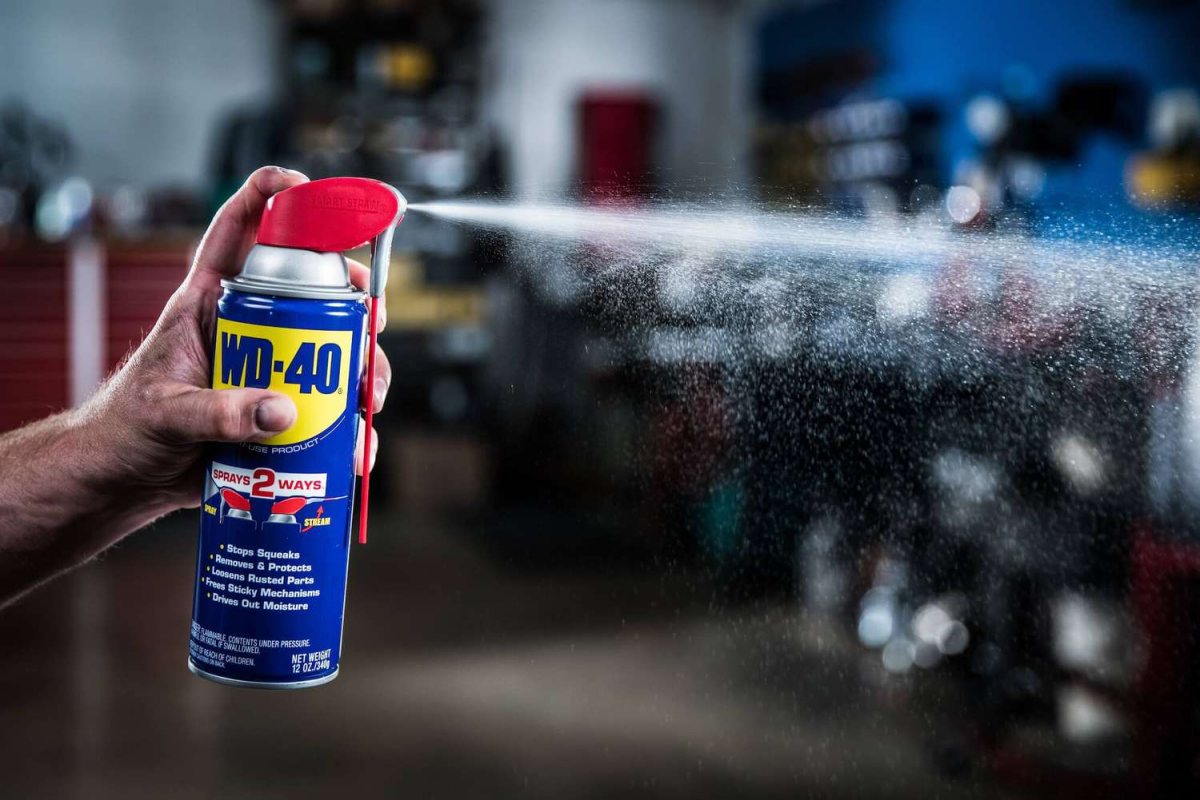
Baby powder
Baby powder, containing talcum powder or cornstarch, is another gentle yet effective absorbent. Its fine grains can penetrate the fabric to absorb oil, much like cornstarch, making it an excellent option for fresh grease spots. The powder helps to lift the grease from the fabric, facilitating its removal during the washing process.
What you’ll need:
- Baby powder
- A soft brush or cloth
Steps:
- Sprinkle baby powder over the grease stain.
- Allow it to sit for 20-30 minutes.
- Brush off the powder gently with a soft brush or cloth.
- Launder the garment as usual.
Baby powder can easily penetrate the fabric to absorb oil
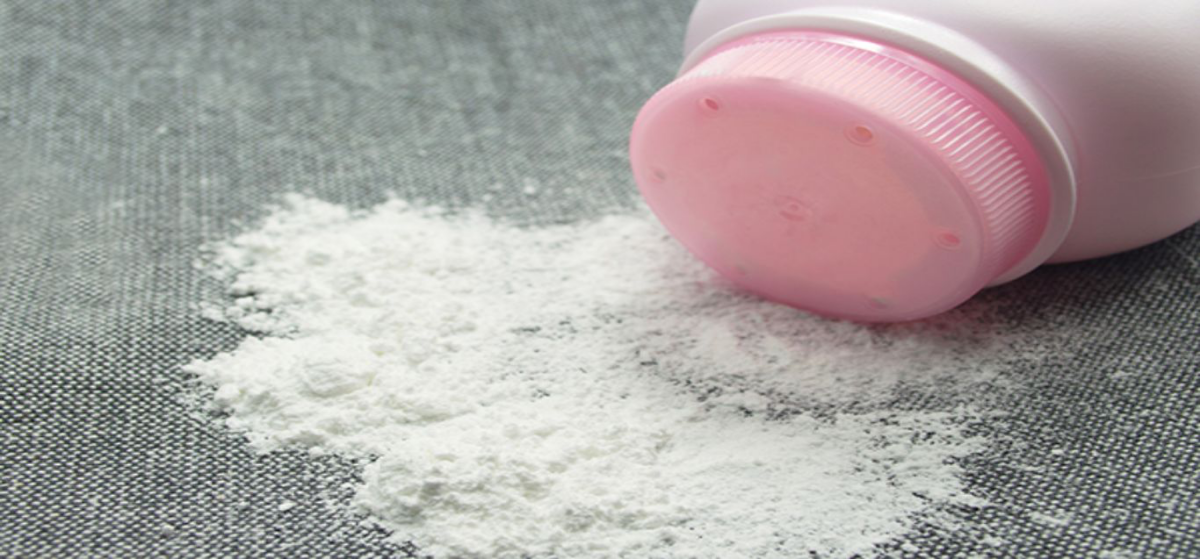
Mechanics soap
Mechanics soap is specifically formulated to tackle heavy grease and oil, common in automotive work. It contains robust degreasing agents and sometimes abrasive materials for scrubbing, which makes it highly effective on fabric stains. Its strength lies in its ability to break down and dissolve grease, allowing it to be washed away without damaging the fabric’s integrity.
What you’ll need:
- Mechanics soap (e.g., Gojo or Fast Orange)
- Warm water
- Soft brush or cloth
Steps:
- Apply a small amount of mechanics soap directly onto the grease stain.
- Using a soft brush or cloth, work the soap into the stain with gentle circular motions.
- Allow the soap to sit on the stain for 10-15 minutes to break down the grease.
- Rinse the area thoroughly with warm water to remove the soap and loosened grease.
- Launder the garment as you normally would, preferably in warm water to ensure the complete removal of the stain.
Mechanics soap is created to deal with grease and oil stains

FAQs
Are oil stains permanent?
The permanence of oil stains is not a decree set in stone but rather a challenge to be met. With swift action and the right approach, most motor oil stains can be lifted from fabrics. The key lies in addressing the stain as soon as possible and employing a methodical cleaning process. Permanence is often a consequence of delay or improper treatment. Therefore, with diligence and care, the fate of an oil-stained garment can be redirected towards renewal rather than retirement.
No oil stain is permanent as long as you take the right action
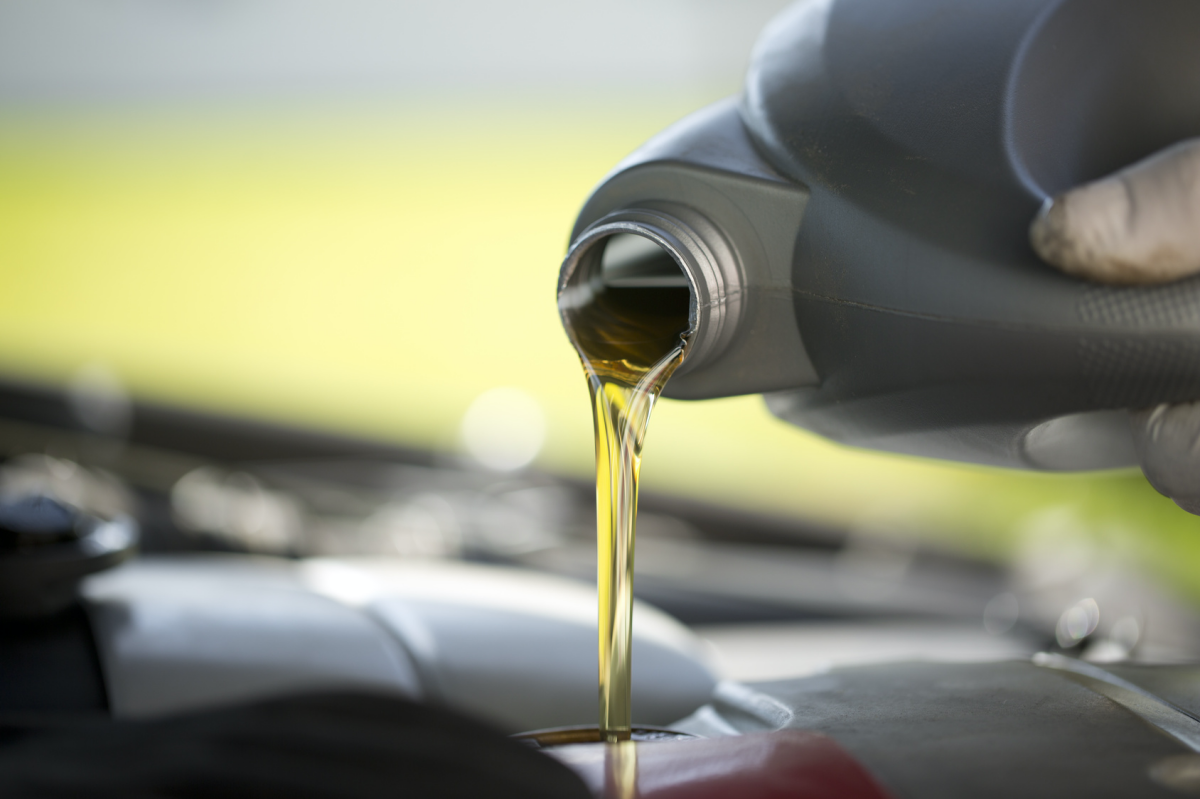
How do you wash mechanic clothes?
Washing mechanic clothes, steeped as they are in the toils of labor and the marks of industry, requires a strategy that balances effectiveness with fabric care. Pre-treating stains with a degreaser or a paste made from baking soda and water can break down the oil before the wash. Washing these hardworking garments in warm water with a heavy-duty detergent designed to combat tough stains is advisable. It’s also beneficial to separate mechanic clothes from the rest of the laundry to prevent the transfer of oil and grease.
You need to pre-treat stains with a degreaser or a paste

Does mechanic grease come out of clothes?
Yes, mechanic grease can be coaxed out of clothes with persistence and the correct cleaning agents. Grease is more stubborn than its liquid counterpart. But it also succumbs to the combined forces of pre-treatment, a suitable cleaning solution, and perhaps a bit of mechanical action (such as gentle scrubbing). Products containing citrus oil, baking soda, or specialized grease-removing detergents are particularly effective in breaking down grease’s grip on fabrics.
Grease can be quite stubborn, unlike its liquid counterpart
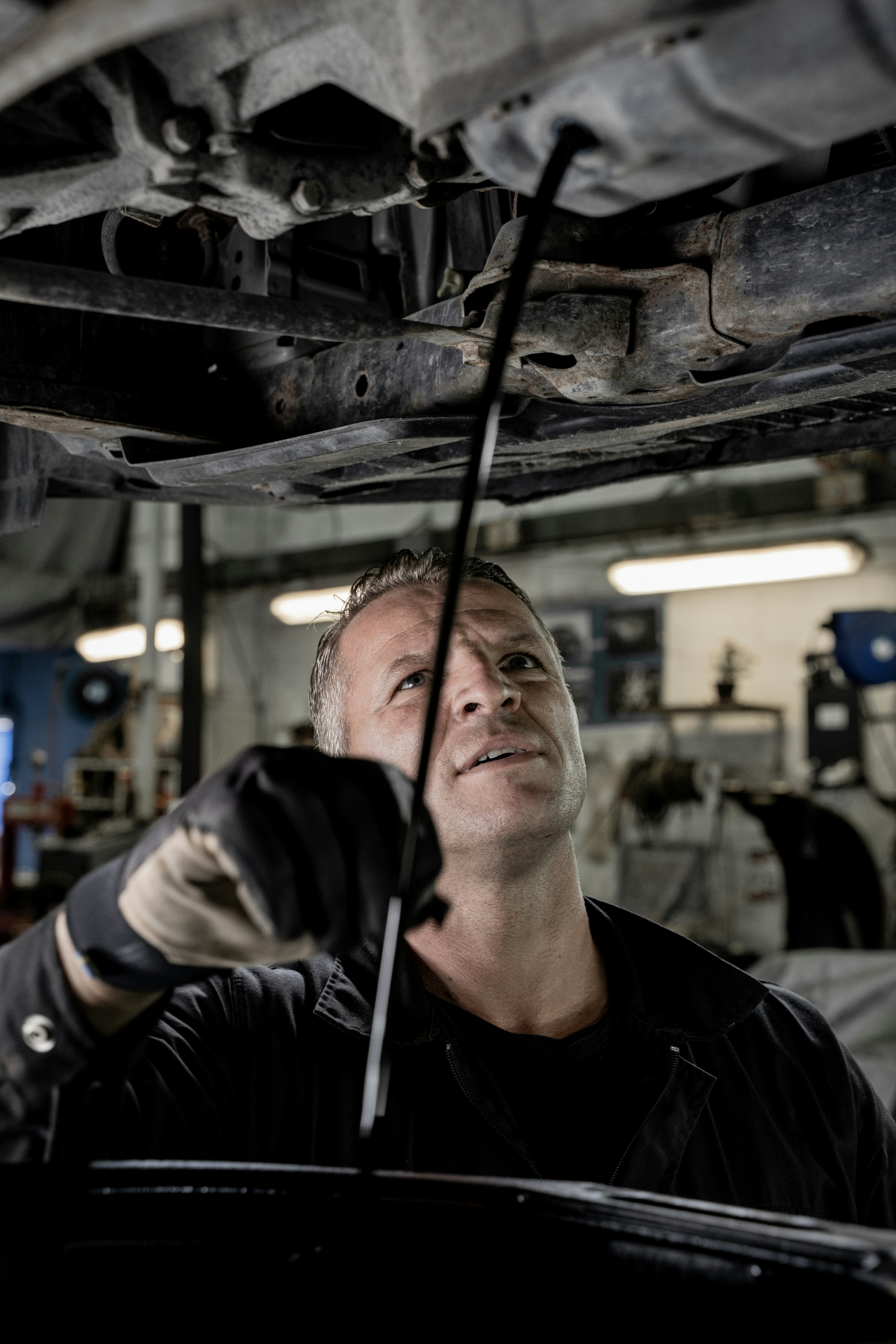
Can regular laundry detergent remove motor oil stains?
While regular laundry detergent plays a crucial role in the overall cleaning process, it might not always be strong enough to tackle motor oil stains on its own. For optimal results, incorporating a pre-treatment step with a degreasing agent or a stain-specific remover before using laundry detergent significantly improves the chances of completely eradicating the stain. For heavy-duty or persistent stains, consider using a detergent formulated specifically for grease and oil.
You need to incorporate a pre-treatment step
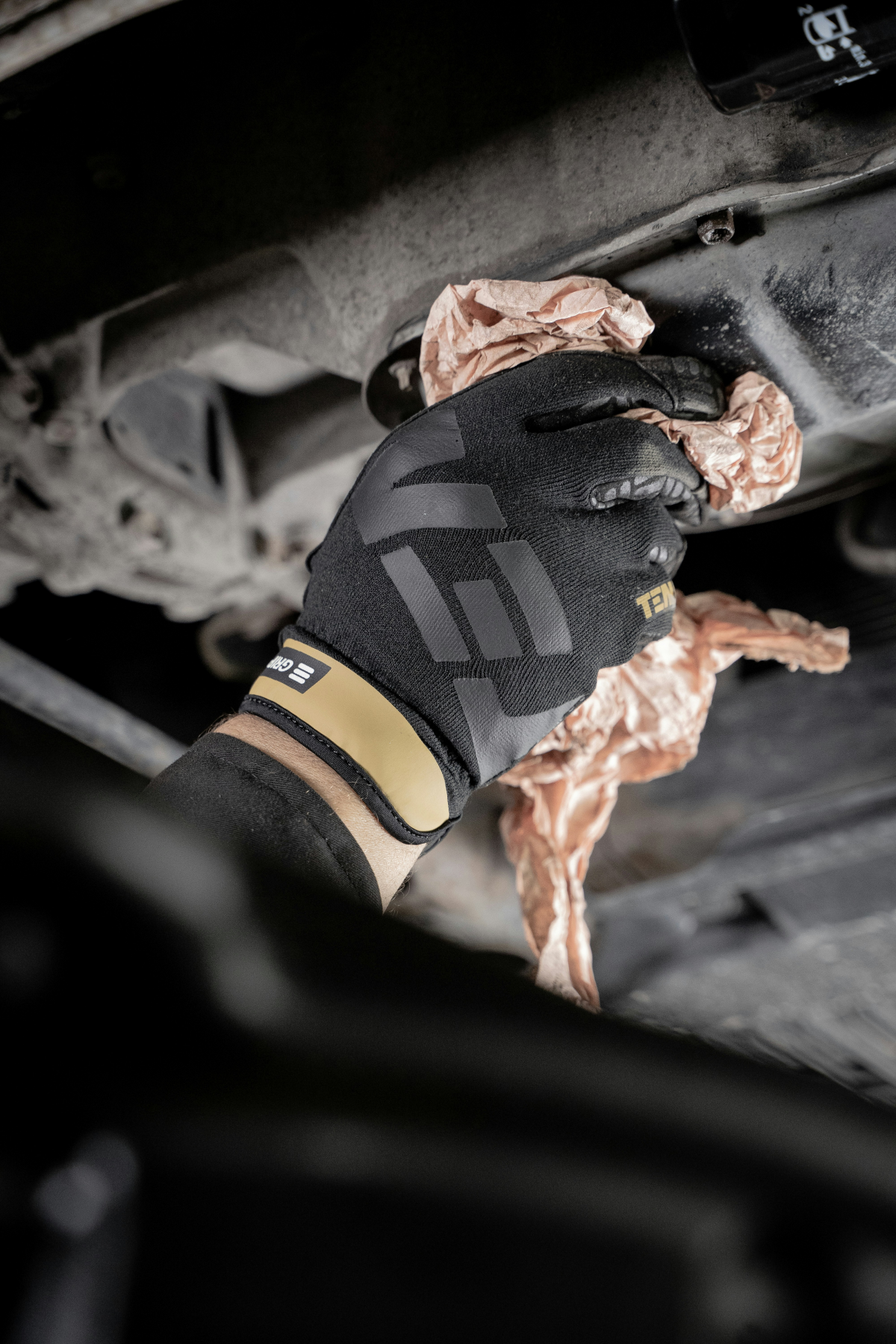
Is it safe to use bleach on oil-stained clothes?
The use of bleach on oil-stained clothes should be approached with caution. While bleach can be effective on certain fabrics, it can also cause discoloration or weaken the fabric, especially if the garment is not white or bleach-safe. For colored fabrics, a color-safe bleach alternative may be used, but always conduct a spot test in an inconspicuous area first. In many cases, non-bleach alternatives, such as baking soda, vinegar, or specialized stain removers, provide a safer and equally effective solution.
Use of bleach on oil-stained clothes with caution
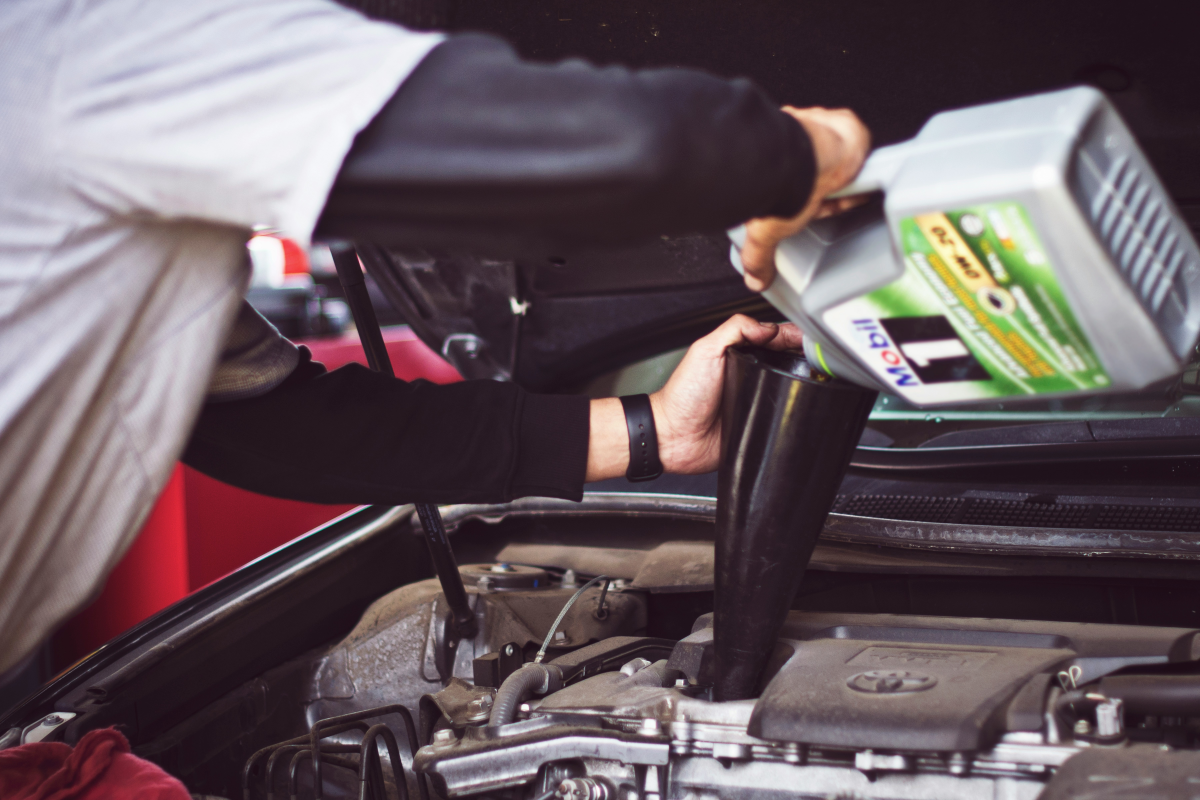
Now you know how to get motor oil out of clothes. The path from stained despair to spotless triumph involves more than just eradicating a mark. It’s about restoring our confidence in our wardrobe. On the bright side, with the right method, any garment can be saved and restored to its former glory. Through determination and the application of specific cleaning techniques, we can successfully revive our clothing. This guide highlights the resilience of our garments and our resourcefulness in maintaining them. Thus, ensuring they remain an integral and cherished part of our daily lives.
Now you know how to get motor oil out of clothes

